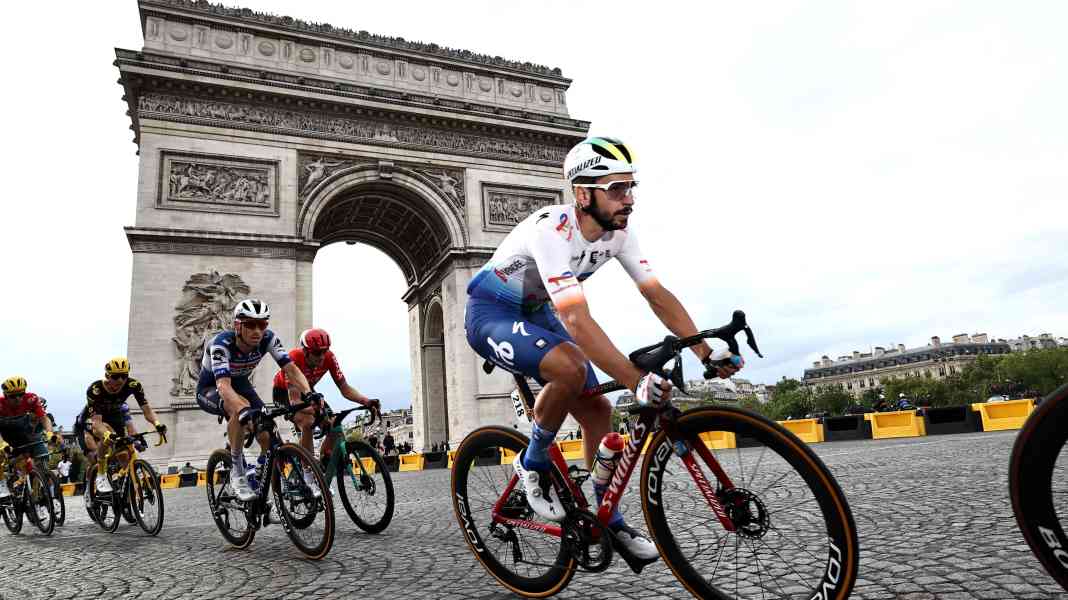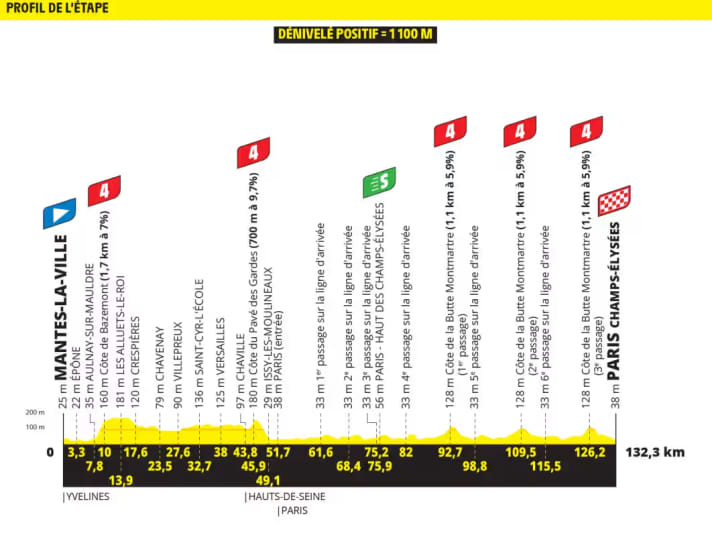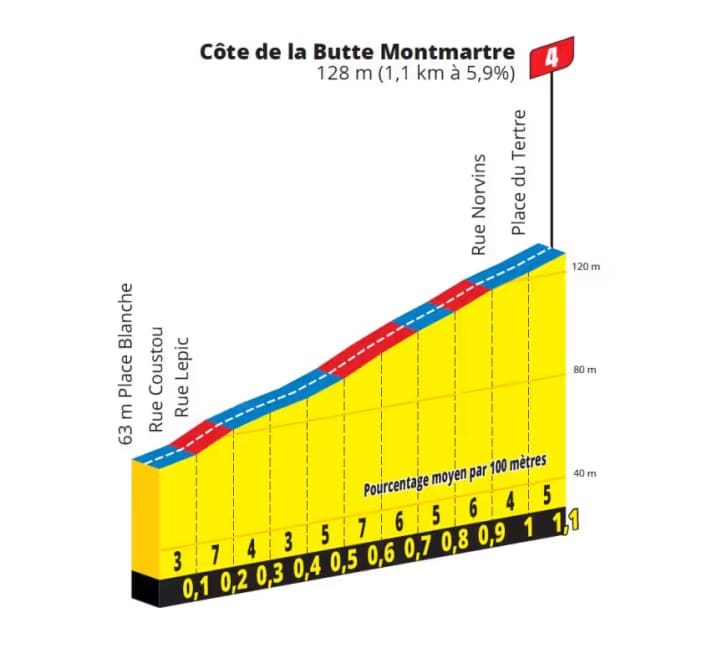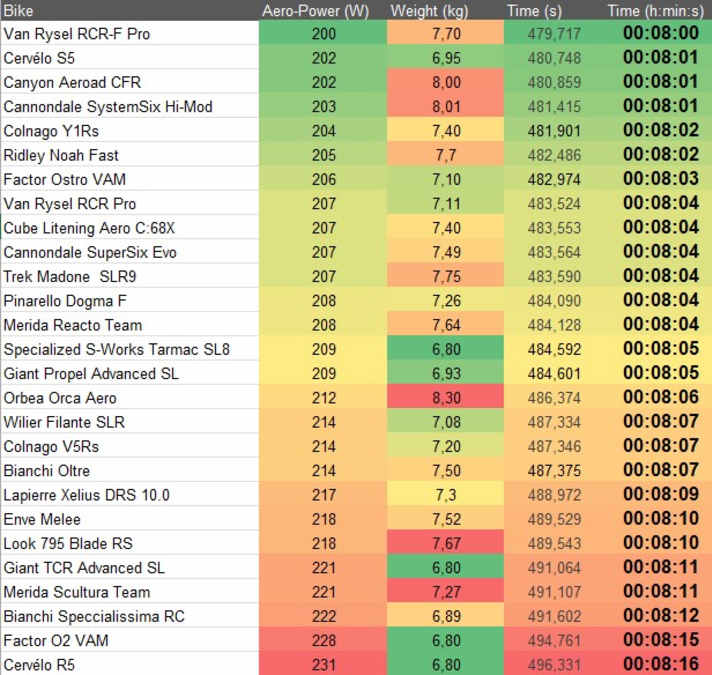
Tour de France 2025 - Stage 21: Mantes-la-Ville - Paris | 132,3 Kilometers

Curtain up for the final act: Traditionally, the Tour ends on the Champs-Élysées, but this year with a three-lap loop over the Montmartre climb, which was also a central element of the Olympic race.
This changes everything. The classic sprint finish becomes a race in which puncheurs can break away on one of the three crossings at Montmartre. After the 62 meters of elevation gain, the route slopes slightly downhill towards the finish. It is impossible for sprint trains to organize themselves here.
Already on the approach to Montmartre, the field will stretch out and break apart on the climb.

In our simulation, we assume a sprint on the final climb up Montmartre. Which bike is mathematically the best basis for a breakaway after such an attack?
The number of the day: One second
The fastest bike for the attack on Montmartre and the extension of the breakaway to the finish is the most aerodynamic bike in the field: the Van Rysel RCR-F Pro narrowly beats the Cervélo S5.
The (almost) complete field at a glance*

The table shows: The fastest bikes for an escape on Montmartre are the ones with the best aerodynamic properties.
*) The calculations are based on the bikes tested by TOUR in the laboratory and wind tunnel. The machines used in the Tour de France may differ in detail. Of course, we were not yet able to examine last-minute prototypes. Background information on the simulation.
Our expert

Robert Kühnen studied mechanical engineering, writes for TOUR about technology and training topics and develops testing methods. Robert has been refining the simulation calculations for years, they are also used by professional teams.
